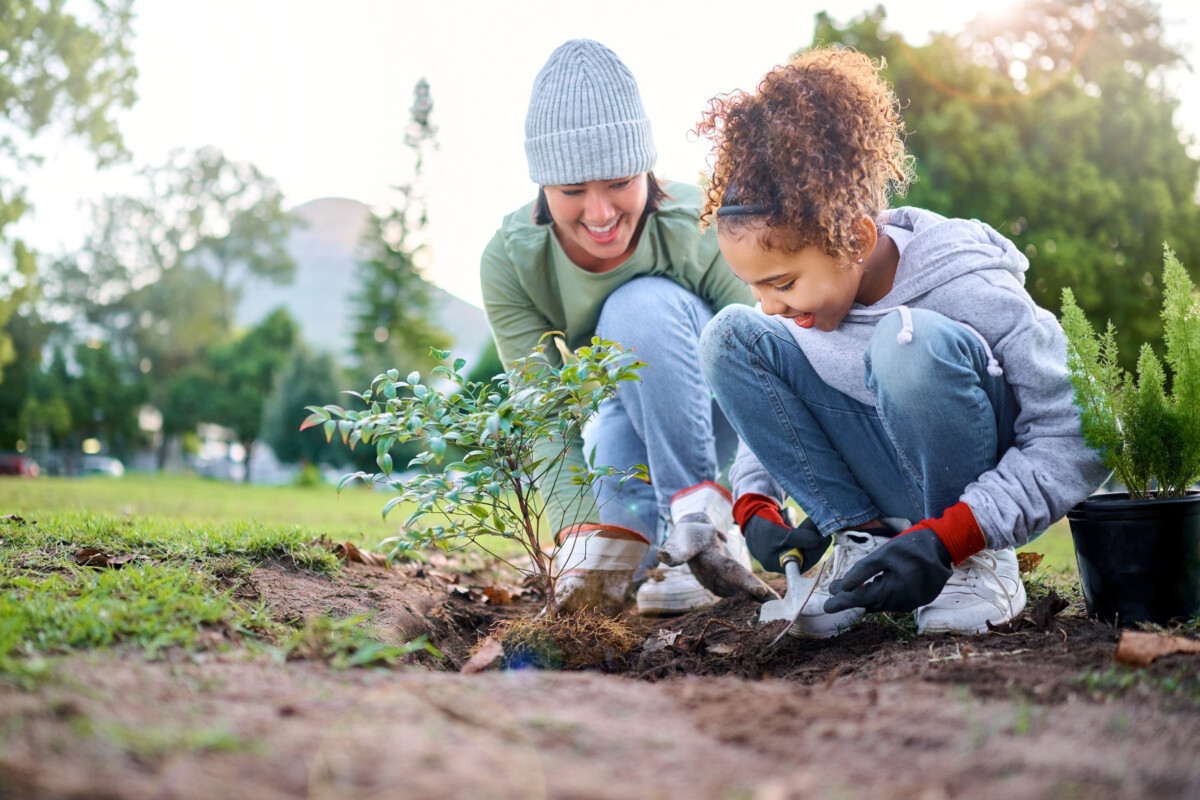Mother Earth Day is a special day to celebrate and honor our beautiful planet, Mother Earth. As humans, we are part of this vast ecosystem and have a responsibility to protect and preserve it. On this day, let’s explore five ways to protect our planet with children!
| Why is teaching children to protect Mother Earth important?
Children are the future guardians of the planet, and it’s essential to impart the value of environmental conservation and sustainability to them from an early age. They are the ones who will inherit the Earth, and they must learn to appreciate and care for it. Our planet is facing numerous environmental challenges like climate change, loss of biodiversity, deforestation, pollution, and plastic waste. These issues will have significant impacts on the quality of life for future generations. By teaching children to protect Mother Earth, we equip them with the knowledge and skills necessary to address these challenges and create a more sustainable future. |
1. Read children’s books in French about the importance of the environment
Reading books about the environment with kids is a fun and educational way to instill important values, inspire a love for nature, and promote environmental stewardship. Here are a few example of books in French about the environment for children and teenagers:
- Petit mais écolo ! (English: “Little but green!”) by Justine de Lagausie (French | 3 to 5 years old)
A picture book that covers thirty easy things you can do everyday to live a little greener! Try drawing on both sides of a page, turning off the light when you leave the room, not leaving the fridge open for too long, or bringing a water bottle with you when you go out so that you don’t buy a plastic water bottle.
- P’tit Loup sauve la planète (English: “P’tit Loup Saves the Planet”) by Orianne Lallemand and Éléonore Thuillier (French | 3 to 5 years old)
At school, the teacher explained to the students that the planet is in danger. P’tit Loup is a little worried. Fortunately, Mom explains to her that there are many things that we can do to take care of our environment. Remember to turn off the lights, recycle your waste, save water … P’tit Loup learns how to do small everyday things with the family.
- Dans quel monde vit-on? (English: “What World do We Live In?”) by Clémentine de Pontavice (French | 6 and up)
A story that investigates the things humans do everyday, especially when it pollutes the oceans, warms the planet, and causes the extinction of different animal species.
- La nature et la pollution (English: “Nature and Pollution”) by Brigitte Labbé and Michel Puech (French | from 6 to 8 years old)
This book, framed as a philosophical debate, tries to get kids to think for themselves on the way we can return to a more respectful relationship with nature so we can keep living on Earth.
- Hubert Reeves nous explique la Biodiversité (English: “Hubert Reeves Explains Biodiversity”) by Hubert Reeves and Nelly Boutinot (French | English | 7 and up)
After spending many years gazing up at the stars, Hubert Reeves has turned his attention to the future of our planet. The world’s friendliest and most enthusiastic astrophysicist takes us on a surprising journey, which will make us all realize how important it is to protect our environment.
- Ecologie : 40 militants engagés pour la planète (English: “Ecology: 40 Activists Committed to the Planet”) by Élisabeth Combres (French | from 9 to 14 years old)
Forty different profiles of writers, philosophers, geographers, scientists, activists, volunteers and politicians who have fought to protect nature since the Industrial Revolution, from Henry David Thoreau to Greta Thunberg.
2. Watch earth day movies
- Glace à l’eau (English: “Popsicle”) (2019, short film by Mathieu Barbe, Damien Desvignes and Victor Hayé | audience: 8 to 10 years old | length: 5mn45). Chloé discovers the unexpected biodiversity of her own garden, full of plants, flowers, butterflies…it’s basically heaven! But soon, a terrible motor monster comes to tear it all down…
- Un carré pour la biodiversité (2015, short film by Morgane Boullier | audience: 8 to 12 years old | length: 6mn30). Separated from its icefield, a curious iceberg is set adrift on the currents. On its exciting, scary, and surprising journey, it stumbles on a world as beautiful as it is troubled.
- Tomorrow (French: Demain) (2015, documentary by Cyril Dion and Mélanie Laurent | audience: 14 and up | length: 1h55). What if showing solutions and telling an uplifting story was the best way to solve the environmental, economic and social problems facing the world?
3. Teach your children about recycling
By starting early, children can develop an awareness of waste and an appreciation for preserving resources. Here are some activities that you can do with your children at home to teach them about recycling:
- Make recycling bins at home
- Collect litter in the park
- Explore different rooms in the house for recyclable items
- Take a peek into your weekly trash and see what single-use items are present! Can you switch any out for compostable or reusable?
- Organize a recycling relay race for your whole family!
4. Preserve resources
By teaching children to conserve resources at an early age, they can develop good habits that can have a positive impact on the environment and the world around them. Don’t forget to role model the behavior you want to see from your kids!
- Teach them to turn off lights and electronics when not in use.
- Encourage them to conserve water by turning off the tap while brushing their teeth and taking shorter showers.
- Teach them to reduce food waste by only taking what they need, finishing their meals, and saving leftovers.
- Encourage them to use reusable containers, bottles and bags for their snacks and lunches instead of disposable ones.
- Reconsider a grass lawn (it takes a lot of water to keep a natural lawn green, and natural lawns have many benefits that cannot be matched by artificial turf!)
- Buy fewer clothes and keep them for years.
- Drive less and walk more.
- Purchase locally-grown produce.
5. Get outside
There are many fun and engaging activities to do outside to connect with nature and appreciate the beauty of the planet:
- Nature scavenger hunt: Create a list of items for children to find in nature, such as leaves, rocks, and flowers. Encourage them to use their senses and explore the natural world around them.
- Nature art: Collect natural materials such as stones, leaves, and twigs, and use them to create art. Children can make sculptures, collages, or even paint with natural materials.
- Outdoor games: Play traditional games such as tag or hide-and-seek, but in a natural setting such as a park or forest. This can help children learn about the environment while having fun.
- Bird watching: Bring binoculars and a bird identification guide to observe and learn about different bird species in the area.
We wish you all a good Mother Earth Day!

